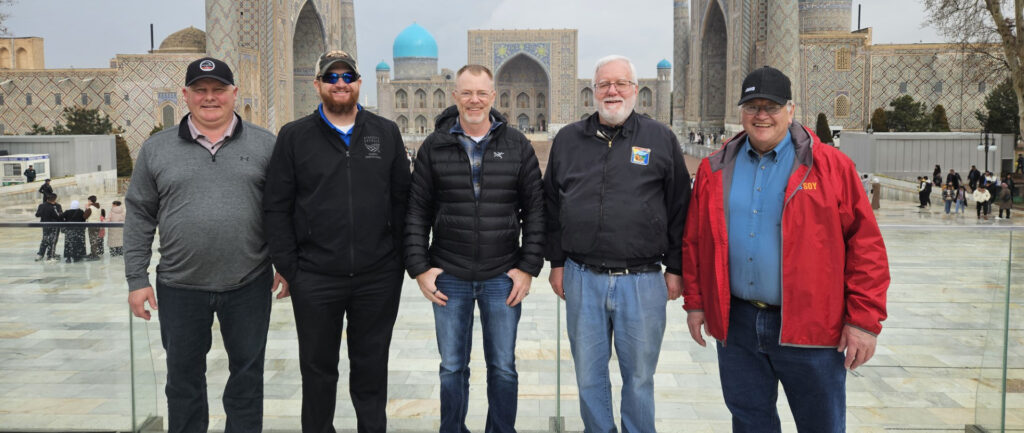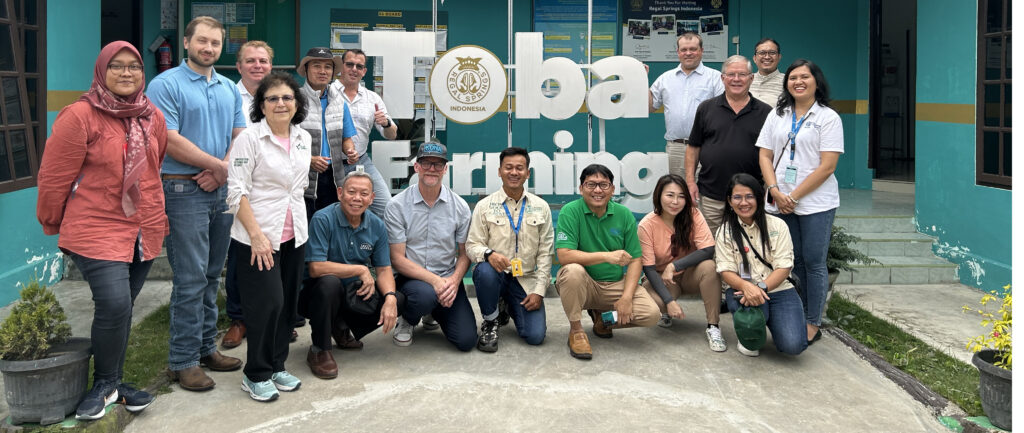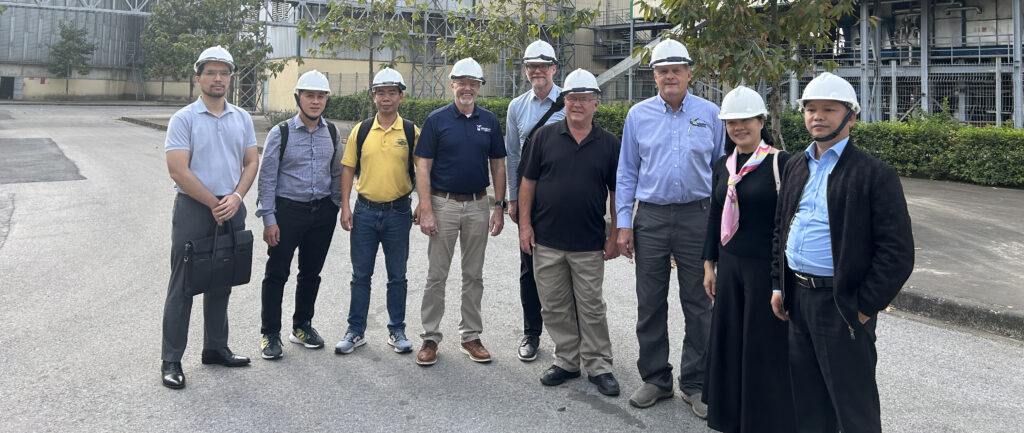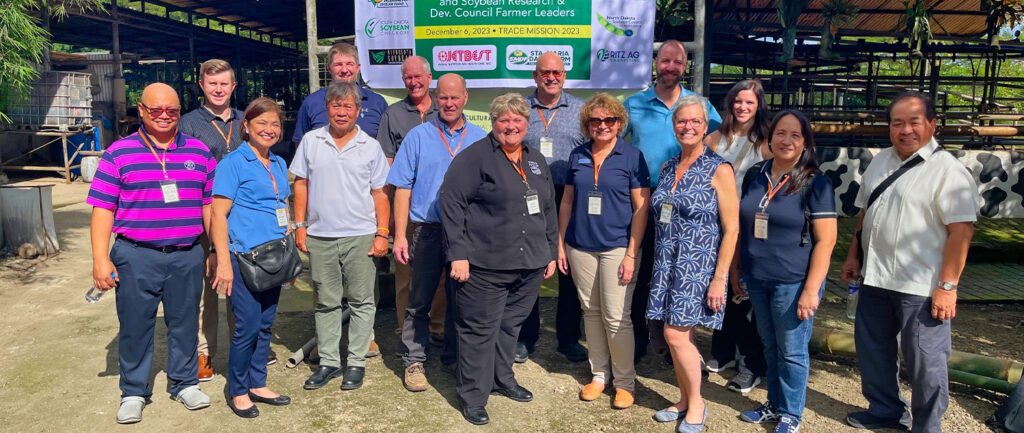Since 2020, the Minnesota Soybean Research & Promotion Council (MSR&PC) has invested checkoff dollars into building soy export markets to Uzbekistan, a landlocked country in Central Asia.
Each year the checkoff’s support has returned promising results. In 2022, the first-ever shipment of 700 metric tons of soybean meal from the United States was shipped to Uzbekistan.
Coming off the heels of the first shipment of U.S. soybean meal, MSR&PC visited the country and toured crush plants, feed mills and had numerous engagements with trade and agricultural leaders.
“We continue to do projects in Uzbekistan to try to get whole soybeans over there,” said Ben Storm, MSR&PC treasurer. “We have an in-country representative over there that’s working with both poultry and dairy facilities to include soybean meal in their rations and looking at getting some crush capacity in Uzbekistan.”
Opening new markets
Because of the foundational opportunities MSR&PC created in the Uzbekistan soybean-purchasing market, Wisconsin Soybean Marketing Board (WSMB) funded six Uzbekistan dairy producers to attend the World Dairy Expo in Madison, Wis., in 2023.
Additionally, USDA also funded 10 Uzbeks to travel to Kansas State University in 2023 for two weeks of training in feed manufacturing and animal nutrition.
Both of these trips used MSR&PC’s in-country representative, Chris Andrew, to recruit participants.
“Building relationships like the one we are cultivating with Uzbekistan is critical to growing export markets for Wisconsin soybean growers,” said WSMB Executive Director Adam Kask.
When returning from both the trips and telling others of what they learned, 18 of Uzbekistan’s largest poultry producers decided to attend this year’s International Production & Processing Expo (IPPE) in early February.
During IPPE, MSR&PC Director of Market Development Kim Nill, engaged with the Uzbek participants and met with three directors of Parrandasanoat, the Uzbekistan Association of Poultry Producers.
“They now realize the need to modernize their poultry production facilities, feed mills, etc., in order to keep up with feeding the record ten million tourists expected in Uzbekistan in 2024, plus the countries’ rapidly growing population, which is now at 37 million,” Nill said.
At IPPE, the Uzbek poultry producers were able to view some of these U.S. equipment and technologies that would help improve efficiencies and increase profits.
After IPPE concluded, WSMB and MSR&PC co-hosted an Uzbek trade team to visit Minneapolis; Duluth, Minn.; Chicago and Joliet, Ill., to meet with soybean meal exporters and other applicable soy industry professionals.
The group also stopped at MSR&PC’s headquarters in Mankato, Minn., where one of the Uzbek soy traders gave a presentation to MSR&PC and WSMB staff.
“Uzbekistan consumes 200,000 metric tons of soybean meal,” said an Uzbek soy trader. “We have a growing industry. Our annual population is growing by two percent each year; therefore, the demand for poultry and meat continues to grow.”
During the visit, the trade delegation talked strategies and logistics to purchase Minnesota and Wisconsin-origin soybeans.
“We want American soybean meal and beans flowing into Uzbekistan,” said an Uzbek soybean trader. “That’s why we are here – to find out how to do that.”
Utilizing maps and charts, both MSR&PC and WSMB leaders showed routes via the Great Lakes St. Lawrence Seaway System as potential opportunities to export soybeans to Uzbekistan.
“Wisconsin is looking to get new processing plants within the states to help open new markets,” Kask said. “These are just the kind of opportunities we are looking for.”







